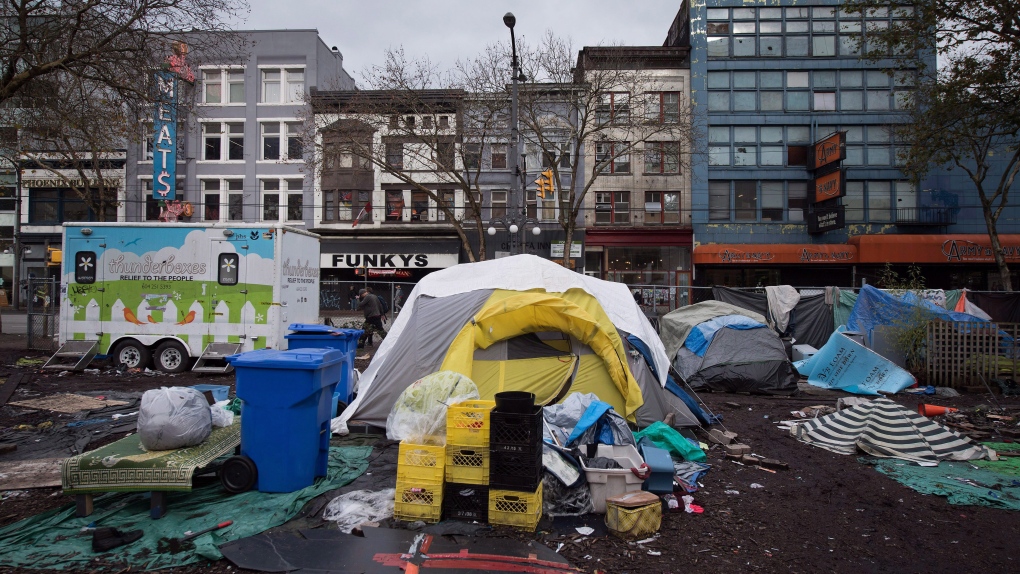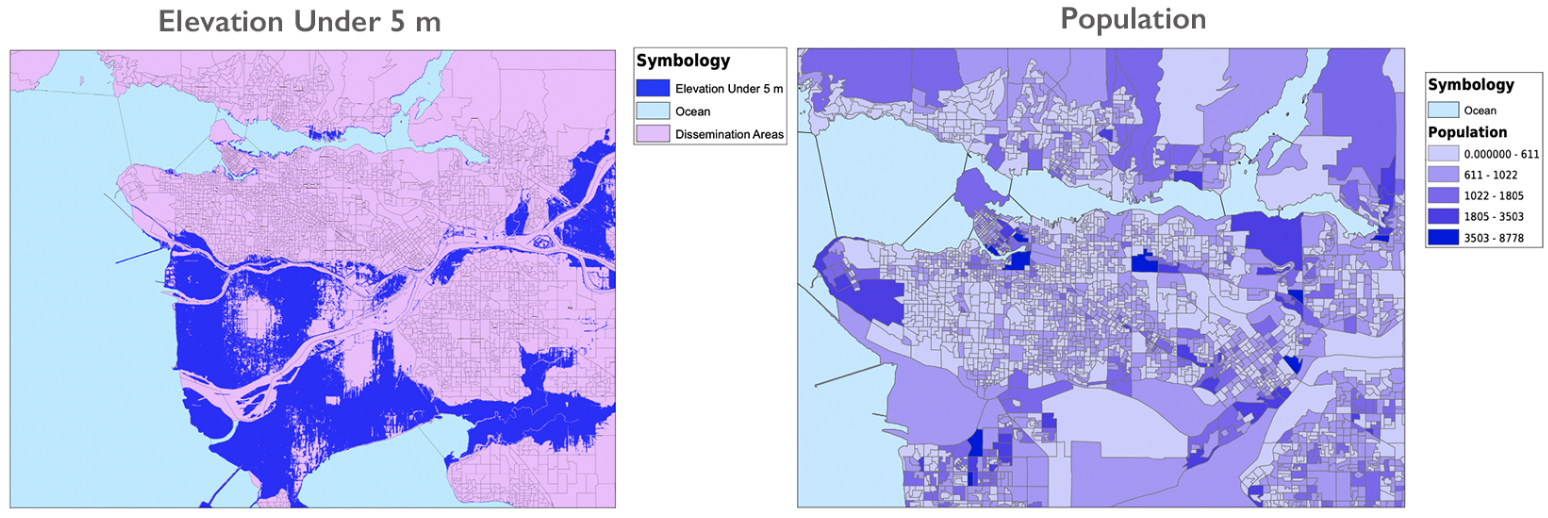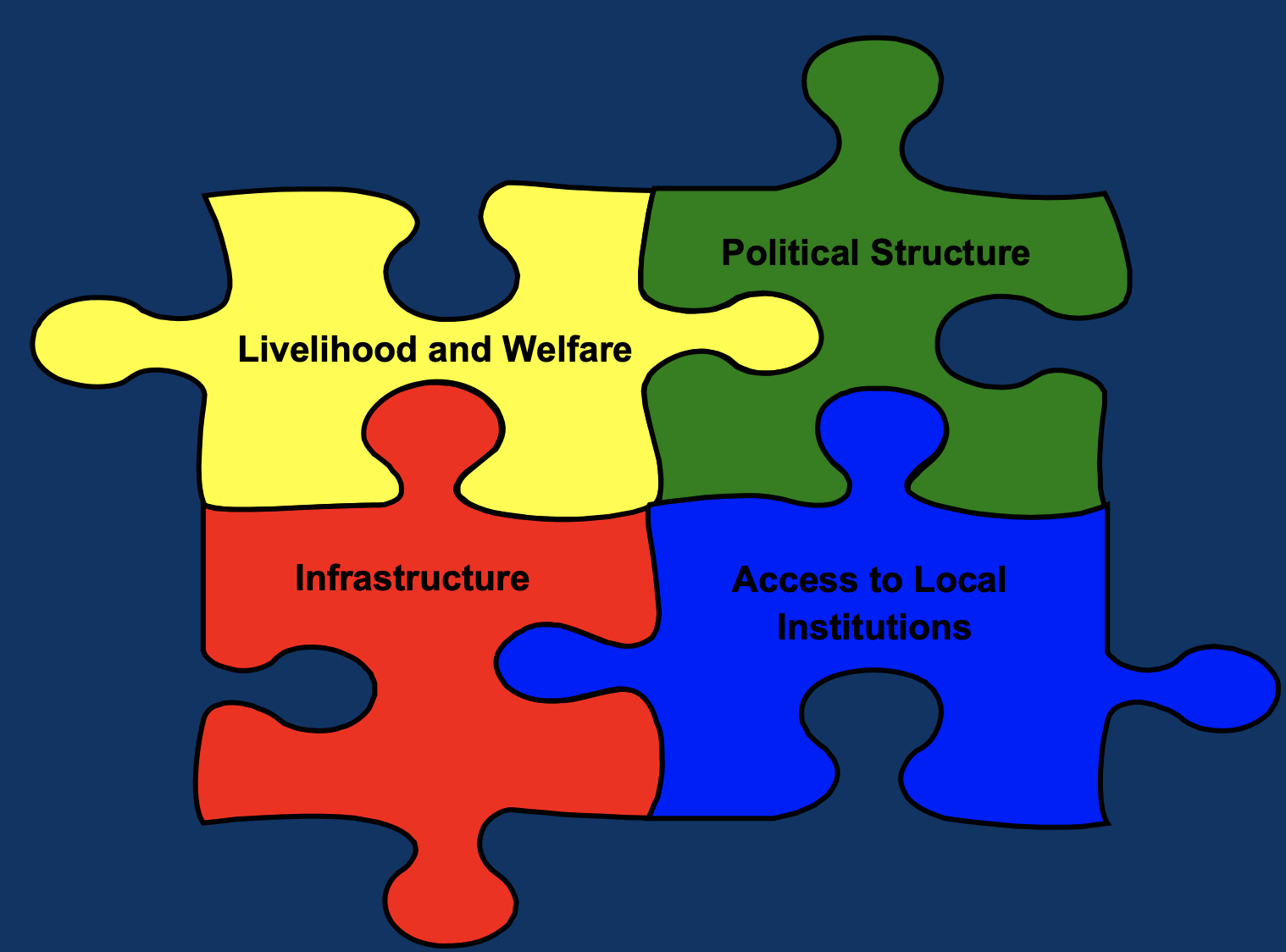Vulnerability Indices
2008 BC Ministry of Health Emergency Management Branch Study
In 2008, the BC Ministry of Health Emergency Management Branch did a study on human vulnerability to climate change. Emily Nixon created a vulnerability index on many different factors, including, age, primary method of transportation, language spoken, level of education, whether individuals had recently immigrated, family economy, among others. Nixon looked at three scenarios of sea level rise: a best case of 0.09 m, a worst case or 0.88 m , and a catastrophic case of 6 m. They found that 186, 900 people live in areas that would be affected by sea level rise. As well, they mentioned that both the port of Vancouver and the Vancouver International Airport would be greatly affected and potentially submerged by these levels of sea level rise. Nixon determined places with low vulnerability, medium vulnerability, and high vulnerability and gave those places a value of 10, 20, or 30, respectively. For example, she gave individuals between the ages of 0-19, and over 64 a vulnerability of 30 while individuals from the age of 19 to 64 were given a vulnerability value of 10. The study was high-level and as such, the data for the vulnerability indicators is not available. The areas that were found to have the highest vulnerability were Northeast Vancouver, Downtown Vancouver, Southeast Vancouver, Downtown Vancouver, and North Vancouver. This study heavily influenced and inspired my project. For much of my process and figuring out what was going on, I looked at 0.09, 0.88 and 6 m increased in the sea level, following Emily Nixon’s parameters.
Social Vulnerability Index for Disaster Management
In a paper published in 2011, several authors look at creating a social vulnerability index for communities in the United States. Recognizing the lack of valuation of human life in risk management, these authors sought to alter that way of thinking. They listed age, income, strength of community, and neighbourhood characteristics as some of the factors that they were considering that contribute towards vulnerability to hazards. Individuals with higher vulnerability indices are going to have a tougher time during any disasters, as well as after during recovery. For example, as given in this paper, after Hurricane Katrina, many low-income individuals were stranded as they did not have access to personal transportation. In order to create their vulnerability index, they used 15 census variables and ranked each census tract across the United States from highest to lowest. Then, a percentile rank was calculated for each census tract which included individual percentile ranks for the different factors and contributed to the overall social vulnerability index for all of the census tracts.






